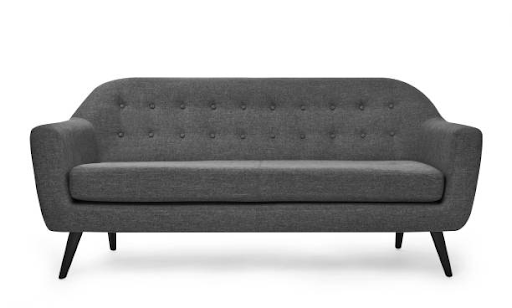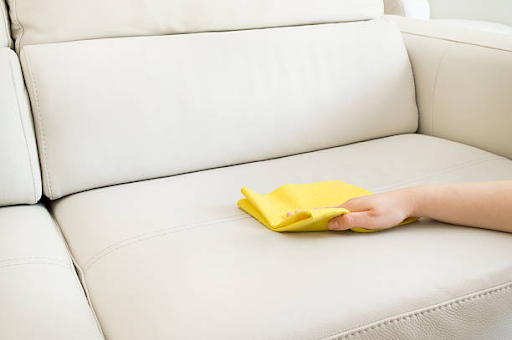How Long Do Couches Last? How Often Should You Replace Them?
How long do couches last? How often should you replace them?
Sofas and settees, usually referred to as couches, are necessary pieces of furniture that offer comfort and relaxation in our homes. The lifespan of a couch is limited, just like that of any other home object. In this post, we'll look at the elements that impact how long couches last and provide advice on when it might be appropriate to think about replacing them.
How long should a couch last?

A couch's lifespan might change depending on a number of variables. A well-built and well-cared-for couch may typically endure between seven and fifteen years, which is your best bet. However, there are some situations when a couch might endure longer or wear out more quickly.
A quality couch's durability is impacted by a number of variables. Its material quality is of utmost importance. Couches with high-density foam, resilient upholstery fabrics, and sturdy oak frames typically endure longer than those with less expensive components.
The lifetime of a couch depends on its use and level of maintenance. Couches that are often used, such as those in homes with kids or animals, may sustain more damage. Vacuuming and spot cleaning on a regular basis can give a longer lifespan to the couch.
Environmental factors can also affect how long a couch lasts. Direct sunlight, high humidity, or sharp temperature swings can all weaken the structure and destroy the components.
Lastly, a couch may need to be replaced before it wears out depending on fashion trends, or if personal tastes change. A sofa replacement decision may be influenced by elements including shifting interior design trends, lifestyle changes, or a desire for a different size or style.
Overall, other factors affecting a couch's longevity include its material quality, use, maintenance, surroundings, and personal preferences.
Signs it’s time to replace your couch
Your couch is a crucial piece of furniture in your living room that offers comfort and relaxation. But after time, it can start to exhibit signs of deterioration, necessitating a replacement. The following factors should prompt you to think about getting a new sofa.

Structural Damage:
- Sagging cushions: If the cushions on your couch are excessively sinking when you sit on them and no longer offer adequate support, it may be that they are no longer structurally sound.
- Broken frame: A couch's stability and structural integrity are jeopardized by a cracked or damaged frame, making it dangerous to sit on.
Excessive stains:
- Permanent stains: Even with your best efforts, if your couch has obstinate, deeply embedded stains that are impossible to remove, it may make your living room appear messy and uninviting.
- Lingering smells: In order to get rid of bad scents, it might be time to replace your couch if cleaning it doesn't completely get rid of them.
Worn-out upholstery:
- Faded fabric: Your couch's fabric may fade over time from exposure to sunshine, appearing drab and old.
- Tearing: Numerous rips and tears in the upholstery limit the couch's comfort and usability, in addition to its appearance.
Allergies and health concerns:
- Dust accumulation: An old couch may contain allergens like pet dander and dust mites, which can exacerbate allergies and respiratory issues.
- Mold growth: Your couch may grow mold or mildew, which could be dangerous to your health, if it has water damage or has been in a wet atmosphere.
Uncomfortable Seating:
- Springs and cushions: Your comfort level while sitting might be greatly affected if the couch springs are sticking out and irritating you, or if the cushions have lost their shape and become lumpy.
Old fashioned:
- Incompatible with decor: Replace your couch to make your living room more unified and aesthetically pleasing if it no longer fits the design or color palette.
- Fashion trends: To obtain a more modern and updated style, you might decide to change your couch in order to stay on top of current design trends.
To spot these indicators, it's crucial to frequently inspect your couch. While some problems are fixable, others can necessitate a complete replacement. When selecting whether to get a new couch, take into account your budget, way of life, and personal tastes to make sure it satisfies your needs for comfort and style.
How long should a sofa last?
If you’re asking "how long does a sofa last?" pay attention to the following guidelines. Before deciding to axe a dependable old sofa, every homeowner should ask one crucial question.
The best investment you can make is a sofa that will not only look good but also age with you, as it is the most utilized and frequently most expensive piece of furniture.
The majority of owners, however, mistakenly believe that their posh new couch should last them anywhere from 7 to over 30 years.

Sofa Frame
You'll understand the value of a solid frame if you've ever sat down on a sofa only to be met by a loud squeak, creak, crack, or unstable legs. Any high-pitched noises coming from your couch are a dangerous sign that there are structural problems.
If the frame breaks, there is little you can do to salvage your couch unless you are an expert DIYer. If you want your furniture to last a long time, make the effort to pick a sturdy frame.
Get a frame that is either constructed of hardwood or metal if you want a sofa that will last through years of heavy use.
Hardwood
The antique sofas you may have spotted skulking in the back of antique shops are typically made of some sort of hardwood. It is the key to their longevity.
Both kiln-dried and engineered hardwood are excellent options for the frame, and will probably outlast every other part of the sofa.
Compared to particleboard, it is a better option. After all, utilizing real wood, which is significantly denser, ensures a structure that will last a bit longer.
Metal
Using metal for the sofa structure is sometimes overlooked. Because manufacturing metal frames needs more specialized equipment, they are less popular.
In actuality, metal is just as durable as hardwood, if not more so. Metal frames have the advantage of not snapping like wooden ones, especially if the wooden frame in question has poorly built joints.
The only major drawback of metal frames is that, in the event that a sofa is misused, they may occasionally distort and bend over time.
Cushions and pillows
Usually, bed pillows last for two years. Similar to beds, your pillow should be replaced if you have trouble falling asleep or if you wake up in pain or stiff. Additionally, allergies are a major warning sign when it comes to pillows because dust mites can live in worn-out couch cushions and exacerbate your symptoms.
Mattress
The typical mattress life is seven to fifteen years. A high-quality mattress's lifespan may be extended by routinely rotating or flipping it. The majority of modern mattresses don't require a box spring, yet they typically last approximately ten years.
Linens
The bedding will last two to three years if you use it consistently. However, if you change yours out every few weeks on wash day or with the changing of the seasons, you can expect it to last about twice as long. The longest-lasting fabrics are often those made on looms using long-staple fibers; also, these fabrics soften with use.
How you can extend the life of your sofa?

- Dust and vacuum frequently
Your couch is constantly in the open, so dust and debris can gather there. Please take the time to vacuum or dust it at least once a weekend. Make sure to clean the areas where dirt, crumbs, and pet hair collect.
If the cushions are not fastened, take them out and give both sides a good vacuuming. Remember to clean the wooden and metallic components as well. Your sofa's appearance will be enhanced and its lifespan positively impacted by regular maintenance.
- Immediately wipe up spills and stains
Avoid spilling food as much as you can on the couch. If you do, don't wait to clean it; it's preferable to do it right away using water and detergent.
When deciding to give the entire couch a thorough cleaning, you should refer to the cleaning instructions that the manufacturers have attached. A surefire strategy to increase the lifespan of your couch is to keep it stain-free.

- Keep away from all heat sources, including the sun's rays
Sofas made of leather are susceptible to cracking and staining from extreme heat. To prevent damage from UV rays, try to keep your leather sofa as far away from the windows as you can.
- Buy a temporary covering
This is among the quickest measures you can take to keep your new bed or couch from aging too quickly. For fabric upholstery, temporary covers are a great solution. When they become worn, you can swap them out while still preserving the original fabric.
- Try some changes
Are you reluctant to replace your old couch because you're attached to it? It can look and feel new by getting regular updates. To extend the life of your couch, think about replacing sagging cushions. Otherwise, you may just consider replacing furniture frequently.
How can you buy sofas and couches that will last long?

Focus on important considerations when you purchase a sofa or couch to last. For long-lasting frames, pick hardwoods like oak or beech. Be on the lookout for strengthened wood or metal brackets in the structure.
For optimum support, choose sinuous or eight-way hand-tied springs. Choose shape-retaining high density foam or down-wrapped foam cushions. Select upholstery that will last, such as leather or tightly woven fabrics.
Check for strengthened seams and stitching. Before buying, test the comfort and sturdiness. Look into reliable companies. Observe maintenance guidelines and clean frequently. Make sure that the frame, springs, and cushions are covered by the warranty.
What kind of furniture lasts the longest?
There are a number of factors that influence how long furniture will survive. Craftsmanship and top-notch materials are necessary. Teak and oak solid wood furniture is renowned for its sturdiness and longevity.
Metal frames that are made of wrought iron or stainless steel give strength and durability. Additionally, furniture with firm construction and reinforced joints can resist heavy use. Plus, leather or tightly woven textiles used for upholstery can increase the longevity of couches and chairs.
Regular cleaning and care, as well as proper maintenance, can extend the life of furniture. In the end, purchasing timeless, well-made items and maintaining them properly will ensure your furniture lasts for many years.
What should you consider when buying a new couch or sofa?
There are a number of things to take into account when purchasing a new couch or sofa. Decide on the size that best fits your demands and the available space first. Think about the design and style that goes best with your current decor.
Examine the durability and comfort of the materials, such as wooden frames and high-density foam cushions. By sitting on it and examining the depth and height, you can gauge the lumbar support and comfort of the seat cushions.
Check the upholstery fabric's stain resistance and longevity. Finally, to make sure you're receiving the best return on your investment, think about your budget and compare costs at several retailers.
